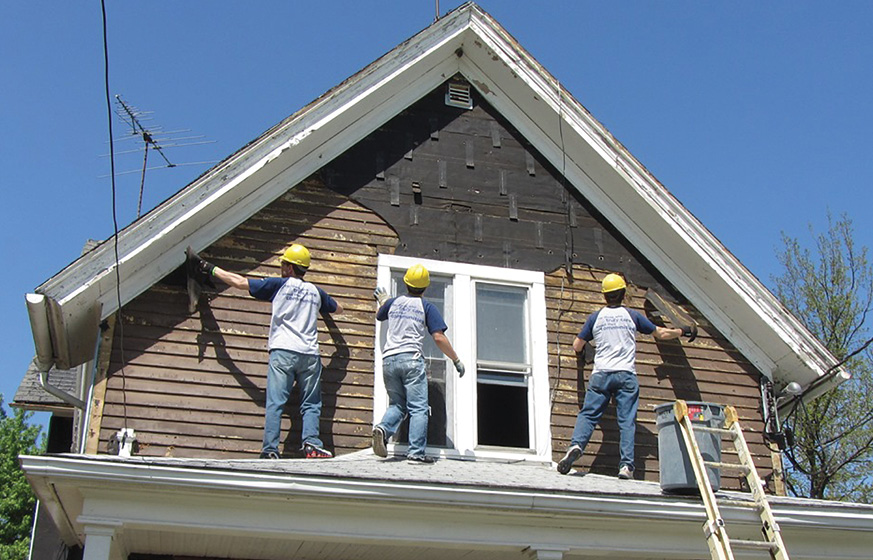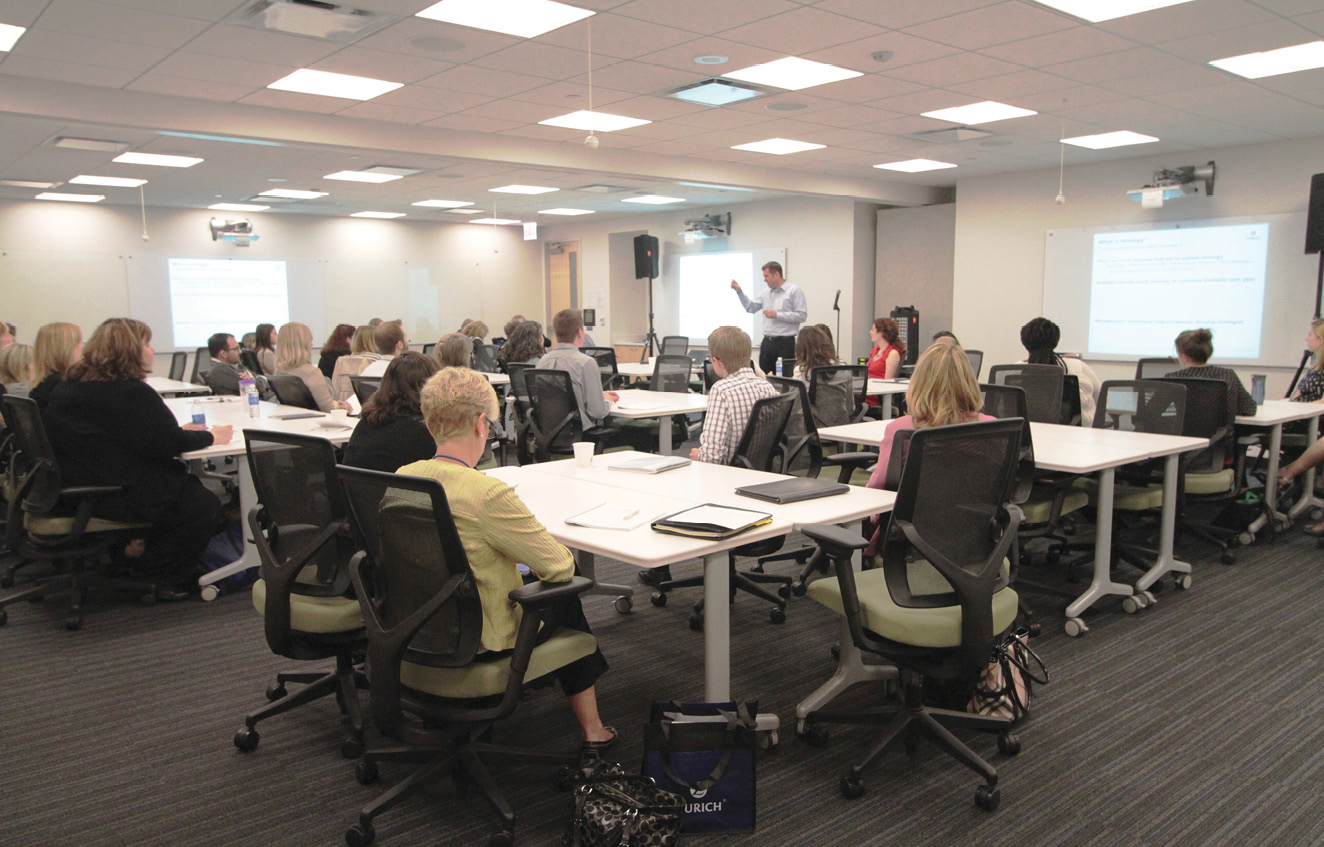- Home
- Media Kit
- Current Issue
- Past Issues
- Ad Specs-Submission
- Ad Print Settings
- Reprints (PDF)
- Photo Specifications (PDF)
- Contact Us

![]()
ONLINE

A Value-Based Organization
Editors’ Note
Jillian Walsh leads the company’s corporate giving, community relations, and employee engagement initiatives. Walsh and her team steward nonprofit relationships with six national core charities and more than 300 local nonprofits focusing on fundraising, education, and volunteerism. She oversees the grants process, and provides meaningful and sustainable opportunities for Zurich employees to serve the community and give voice to the Zurich Commitment. She earned a Master’s Degree in Higher Education and a Bachelor’s Degree in Advertising Communications from Syracuse University.
Company Brief
Zurich Insurance Group (Zurich) is a leading multi-line insurer that serves its customers in global and local markets. With more than 55,000 employees, it provides a wide range of general insurance and life insurance products and services. Zurich’s customers include individuals, small businesses, and mid-sized and large companies, including multinational corporations, in more than 170 countries. The group is headquartered in Zurich, Switzerland, where it was founded in 1872.
In 1912, Zurich entered the U.S. market. Zurich in North America (zurichna.com) is the fifth largest commercial property-casualty insurance company, serving the global corporate, large corporate, middle market, specialties, and programs sectors. Zurich’s risk engineering services in the United States are provided by Zurich Services Corporation.
How does Zurich focus its efforts to help the community?
Community Investment helps people and communities at risk. As a value-based organization, we truly care about the communities in which we live and work, giving back through volunteering, fundraising, and education. It’s in our DNA as a company.
In North America, we focus our efforts in three areas: the first is community resilience, which seeks to help communities manage their risk related to social and economic adversity; the second is health and welfare of kids, which seeks to promote a healthy, stable, and safe living environment for vulnerable children; and the third area of focus is health, which seeks to promote wellness and support initiatives aimed at minimizing the impact of health risks.
We support six core charities in the U.S., six hospitals in Canada, as well as more than 300 nonprofits through our grants program. We provide more than $4 million a year in giving, which includes financial donations, the dollar equivalent value of employee volunteer hours, and more than $600,000 in grants to community and regional charities supported by Zurich employees. The employee involvement piece is a key part of our eligibility grant requirements. We want to support programs where our employees have a passion, align with our business, and meet critical community needs.

Groups of Zurich employees routinely participate in
builds with Habitat for Humanity.
In 2015, Zurich employees
participated in more than 100 builds throughout the U.S.
How do Community Investment activities in North America align with Zurich’s overall business strategy?
We focus on areas that are related to our core business so that we can make use of our knowledge and skills as a global insurer. All North American efforts connect to our global focus on sustainable disaster management, and the social and economic empowerment of individuals and communities.
This includes community flood resilience. Flood resilience is a major area of emphasis for us because floods affect more people worldwide than any other natural hazard and, as insurers, we know how much impact they have on people’s lives and how much damage they can cause.
We also provide employees with opportunities to help nonprofits just by simply doing what they are great at doing. This is called skills-based volunteering and involves Zurich employees using their professional skills to strengthen the structure of nonprofits, enabling them to grow capacity and achieve their missions. It helps nonprofits advance in areas that require more expertise without using additional funds. For example, our data scientists provided the necessary data for the St. Bernard Project – a nonprofit helping disaster-impacted citizens and communities recover in a prompt, efficient, and predictable manner – to identify communities with the potential to be impacted by severe storms throughout the U.S. Members of our legal team also do pro bono work. For example, volunteers from Zurich’s legal department staff a call line to answer legal questions from individuals with disabilities for Equip for Equality, a nonprofit helping to advance the civil rights of people with disabilities through legal services, public policy, monitoring, and training.
A recent study revealed that
31 percent of corporate employees volunteer, but at Zurich, nearly 50 percent of our employees volunteer.
How do you get employees involved in Community Investment activities?
Success in large corporate volunteer programs requires a strong vision and an organized structure that is supported by top executives and guided by enthusiastic employees. We strategically designed and implemented our volunteer structure over the past decade. Our organizational structure has served as a catalyst for volunteer achievement by giving employees at more than 40 offices in North America opportunities to volunteer on and off company time.
It’s exciting to see our strategic approach working. A recent study revealed that 31 percent of corporate employees volunteer, but at Zurich, nearly 50 percent of our employees volunteer. In 2015, Zurich employees took part in more than 900 projects of service supporting the community.

In addition to offering skills-based volunteering efforts
throughout the year, Zurich in North America holds an
annual SkillShare Summit in which nonprofit organizations
have the opportunity to network with colleagues and
learn valuable information and skills.
What have you learned over the 14 years as the leader of the team that helps other organizations trying to make a difference in the communities they serve?
I have learned that employees are naturally enthusiastic about serving in the community and feel more engaged in companies that provide these opportunities. At Zurich, we give our employees a variety of ways to get involved as charity champions, event leaders, or in-a-pinch volunteers. Many employees may start by participating episodically, perhaps swinging a hammer on a home build for a day and then decide that they would like to grow their commitment to an organization by lending their professional or leadership skills at a deeper level. Allowing employees to advance their involvement is key and also provides a unique individual development opportunity for enhancing their professional skill set.
There are a few key ingredients in our recipe for caring for the community: embed our program in our company values and business strategy, connect with nonprofits that are most meaningful to our employees and business, and ignite employee enthusiasm with volunteer opportunities. Finally, we stay connected to professional organizations inside and outside our industry that are on the cutting edge, like the Committee Encouraging Corporate Philanthropy and Insurance Industry Charitable Foundation. Staying connected to these types of groups can help us remain current and grow our community investment program.•